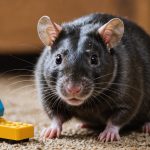Crafting a Nutritious Raw Diet for Your Growing Boxer Puppy: A Comprehensive Guide
When it comes to feeding your Boxer puppy, the decision to opt for a raw diet can be both exciting and intimidating. When done correctly, a raw diet can provide your puppy with the nutrients they need to grow strong and healthy. Here’s a detailed guide to help you navigate the world of raw feeding for your Boxer puppy.
Understanding the Basics of a Raw Diet
Before diving into the specifics, it’s essential to understand what a raw diet entails. A raw diet for dogs typically includes uncooked meat, bones, and sometimes fruits and vegetables. Here are some key points to consider:
Topic to read : Mastering Beagle Training: Tips to Curb Counter Surfing and Food Temptation
What is a Raw Diet for Dogs?
A raw diet is designed to mimic the natural diet of wild canines, focusing on raw meat, bones, and other unprocessed foods. This approach is based on the belief that dogs are evolutionarily adapted to eat raw foods and that processed dog foods can lack essential nutrients[4].
Potential Benefits of Raw Diets
- Improved Digestion: Many dog owners report better digestive health when switching to a raw diet.
- Shinier Coat: Raw diets often lead to healthier skin and a shinier coat.
- Increased Energy: Dogs may exhibit more energy and vitality.
- Reduced Allergies: Some dogs experience a reduction in food allergies and sensitivities[4].
Planning Your Puppy’s Raw Diet
Nutritional Requirements
Boxer puppies have specific nutritional needs that must be met to ensure healthy growth. Here are some key nutrients to focus on:
This might interest you : Essential Tips for Choosing the Perfect Training Collar for Your Stubborn Akita
- Protein: High-quality protein sources like chicken, beef, and fish are crucial.
- Fat: Essential fatty acids support skin, coat, and overall health.
- Calcium and Phosphorus: These minerals are vital for bone development.
- Vitamins and Minerals: A balanced mix of vitamins and minerals is necessary for overall health.
Creating a Balanced Raw Diet
To ensure your puppy is getting all the necessary nutrients, you need to create a balanced diet. Here’s a detailed list of what you should include:
- Muscle Meat: Include a variety of muscle meats like chicken, beef, and fish.
- Example: Chicken breast, beef strips, salmon fillets.
- Meaty Bones: These provide calcium and other minerals.
- Example: Chicken necks, beef knuckle bones, fish heads.
- Organs: Organs like liver, kidneys, and spleen are rich in vitamins and minerals.
- Example: Chicken liver, beef kidneys.
- Fruits and Vegetables: While not essential, these can add fiber and vitamins.
- Example: Apples, carrots, sweet potatoes.
### Sample Raw Diet Plan for a Boxer Puppy
| Day | Breakfast | Dinner |
|
|--------------------------------------------|
|
| Mon | 1 lb Chicken Breast, 1/2 lb Chicken Neck | 1 lb Beef Strips, 1/2 lb Beef Knuckle Bones|
| Tue | 1 lb Fish Fillets, 1/2 lb Fish Heads | 1 lb Chicken Thighs, 1/2 lb Chicken Liver|
| Wed | 1 lb Beef Strips, 1/2 lb Beef Marrow Bones | 1 lb Chicken Breast, 1/2 lb Chicken Kidneys|
| Thu | 1 lb Chicken Thighs, 1/2 lb Chicken Necks | 1 lb Fish Fillets, 1/2 lb Fish Heads |
| Fri | 1 lb Beef Strips, 1/2 lb Beef Knuckle Bones| 1 lb Chicken Breast, 1/2 lb Chicken Liver |
| Sat | 1 lb Fish Fillets, 1/2 lb Fish Heads | 1 lb Chicken Thighs, 1/2 lb Chicken Kidneys |
| Sun | 1 lb Beef Strips, 1/2 lb Beef Marrow Bones | 1 lb Chicken Breast, 1/2 lb Chicken Necks |
### Note:
- The portions should be adjusted based on the puppy's weight and age.
- Always consult with a veterinarian before making any significant changes to your puppy's diet.
Transitioning Your Puppy to a Raw Diet
Transitioning your puppy to a raw diet should be done gradually to avoid digestive upset. Here’s a step-by-step guide:
Gradual Introduction
- Week 1-2: Mix a small amount of raw food with their current kibble.
- Week 3-4: Increase the proportion of raw food to kibble.
- Week 5 and beyond: Transition fully to raw food, monitoring your puppy’s health and adjusting as necessary[1].
Monitoring Health
Keep a close eye on your puppy’s health during the transition. Look for signs such as:
- Improved stool quality
- Increased energy
- Better coat condition
- Any adverse reactions like vomiting or diarrhea
Potential Risks and Considerations
While a raw diet can be highly beneficial, there are also potential risks to consider:
Choking Hazards and Dental Issues
Raw bones can pose a choking hazard and may cause dental problems if not chosen correctly. Opt for meaty bones that are large enough not to be swallowed whole[4].
Nutritional Imbalances
A raw diet can be nutritionally imbalanced if not planned carefully. Ensure that your puppy is getting all the necessary nutrients by consulting with a veterinarian or a canine nutritionist.
Cost and Convenience
Raw diets can be more expensive and less convenient than traditional kibble. However, many pet owners find the benefits outweigh these drawbacks.
Real-Life Examples and Testimonials
Many pet owners have seen significant improvements in their dogs’ health after switching to a raw diet. Here are a few testimonials:
- “After switching my Boxer to a raw diet, I noticed a significant improvement in his digestive health and energy levels. His coat is shinier, and he seems more vibrant than ever before.”
- “My Boxer puppy had severe allergies and skin rashes on a traditional kibble diet. Since switching to raw, these issues have completely cleared up, and he is now a happy and healthy dog.”
Practical Tips for Feeding Your Boxer Puppy Raw
Here are some practical tips to keep in mind when feeding your Boxer puppy a raw diet:
Feed According to Weight
Adjust the amount of food based on your puppy’s weight and activity level. A general rule is to feed 2-3% of your puppy’s body weight per day, divided into two meals.
Choose High-Quality Ingredients
Opt for fresh, human-grade ingredients to ensure your puppy is getting the best possible nutrition.
Avoid Overfeeding
Boxer puppies can be prone to obesity, so it’s crucial to monitor their weight and adjust feeding amounts accordingly.
Crafting a nutritious raw diet for your Boxer puppy requires careful planning, attention to detail, and a commitment to providing the best possible nutrition. By understanding the basics of a raw diet, planning a balanced meal plan, and being aware of the potential risks and considerations, you can help your puppy grow into a healthy and vibrant adult dog.
Remember, always consult with a veterinarian before making any significant changes to your puppy’s diet, and be patient during the transition process. With the right approach, a raw diet can be a rewarding and healthy choice for your Boxer puppy.
Potential Health Risks Associated with Raw Diets
When considering a raw feeding regimen for your pet, understanding the health risks involved is crucial. Raw diets, when incorrectly managed, can pose several concerns. Ingredient contamination is a significant risk, often arising from improper handling or storage of raw meat. This can expose pets to harmful bacteria like Salmonella or E. coli, leading to severe health issues.
Moreover, achieving a balanced diet with raw feeding can be challenging. Pets require a precise ratio of nutrients, and any imbalance—such as a deficiency or excess in protein, vitamins, or minerals—can have adverse effects on their health. For example, an excess of vitamin A or D can lead to toxicity, while a lack of calcium may cause skeletal issues.
To mitigate potential issues with raw feeding, vigilance is essential. Always source high-quality ingredients, strictly adhere to proper storage guidelines, and consider consulting a veterinary nutritionist to ensure dietary requirements are met. Recognizing symptoms of dietary imbalance, such as changes in coat quality or behaviour, can prevent long-term health problems for your beloved pet.
Transitioning to a Raw Diet
Introducing a puppy to a raw diet requires careful monitoring and gradual changes to ensure success. Start by replacing a small portion of the current food with raw options, gradually increasing the raw food over several days or weeks. This allows your puppy’s digestive system to adjust smoothly, reducing the risk of digestive upset.
During this transition, watch for signs of a successful switch, such as consistent stool quality and maintained energy levels. It’s crucial to monitor these aspects closely; they act as indicators of how well your puppy adapts to the new diet. Keep an eye on any potential changes, and adjust the transition process accordingly.
Overcoming challenges is part of this journey. It’s common to face reluctance from your puppy when trying new foods. Encourage them by offering a variety of raw options, like different meats and organ types, to keep meals enticing. Mix raw and familiar foods gradually to make the transition smoother.
Implementing these puppy feeding tips helps in achieving a successful raw diet transition. Remember to remain patient and attentive to your puppy’s needs throughout the process. This gradual introduction not only supports digestion but also fosters long-term dietary health.
Veterinary Recommendations on Raw Feeding
When considering a raw diet for your puppy, seeking veterinary advice is crucial. Veterinarians can offer personalised guidance to ensure the diet meets your pet’s health needs. It’s recommended to consult with a vet about specific nutritional requirements, especially during the growth phases of a puppy.
Before initiating a raw feeding regimen, schedule comprehensive check-ups and tests. These include screenings for potential allergies or digestive issues that might affect how your puppy processes a raw diet. Regular health evaluations are pivotal to track your puppy’s development and nutritional status.
Finding a veterinarian experienced with raw feeding can make all the difference. Here are some tips for locating a suitable vet:
- Look for vets who actively endorse or have experience with raw diets.
- Seek out veterinary clinics that discuss raw feeding options explicitly.
- Join online communities to get recommendations from other dog owners about vet consultations.
Remember, a vet familiar with raw nutrition can provide balanced meal plans and monitor the health updates, ensuring the safety and effectiveness of a raw diet for your furry friend.
Recipes for Raw Feeding
Creating raw food recipes can be both simple and rewarding, especially when considering the nutritional needs of your puppy. Ensure each meal is not only delicious but also balanced for optimal health.
Easy Recipe Ideas for Beginners
For those new to puppy meal prep, start with a blend of basic ingredients. Chicken and vegetables form an excellent foundation. Combine minced chicken with pureed carrots and peas for a nutritious and easy-to-prepare dish. Include a small portion of organ meat, such as beef liver, for an added nutrient boost.
Customized Meal Plans for Boxer Puppies
Boxer puppies require specific dietary considerations to support their growth. A balanced meal plan could include turkey, crushed bones, and spinach, delivering the right mix of protein and calcium. Adjust the proportions as your puppy grows, ensuring all essential nutrients are properly covered. Consult with a vet for the best results.
Treats and Add-ons for a Raw Diet
Incorporating snacks that complement the raw diet can alleviate hunger between meals. Try offering small bites of apple (without seeds), or a dollop of unsweetened pumpkin puree. These healthy snack options are delicious while supporting the digestive system.
Frequently Asked Questions about Raw Feeding
Raw feeding can be an exciting yet confusing journey for pet owners, especially when they are dealing with a new puppy diet. Here, we’ll address some common questions and debunk myths related to this diet.
What constitutes a balanced raw diet for puppies?
A balanced raw diet should include meat, bones, organs, and some fruits and vegetables. Reputable raw diet providers or consulting with a veterinarian can ensure nutritional adequacy.
Are there risks associated with raw feeding?
Some common concerns include bacterial contamination and nutritional imbalances. Handling raw food properly and ensuring a well-researched meal plan minimizes these risks.
Is kibble better than raw feeding?
There are myths that kibble is the only nutritionally complete option. However, a properly formulated raw diet can meet a puppy’s nutritional needs just as effectively.
Choosing the best feeding option requires weighing personal circumstances and consulting resources. Many online communities and pet nutrition experts offer support and personalized guidance, helping new pet owners navigate their questions about raw feeding and their puppy’s diet needs.
Understanding the Nutritional Needs of Boxer Puppies
Boxer puppies have specific nutritional requirements that are crucial for their healthy growth and development. As a breed known for their high energy and muscular build, Boxers require a well-balanced diet that supports their active lifestyle and unique body structure.
A Boxer puppy diet should include an optimal balance of macronutrients to foster proper growth. Proteins are essential, as they are the building blocks of muscles and tissues. Fat is another vital component, providing the necessary energy Boxer puppies need for their vigorous activities. Carbohydrates, although not required in large quantities, help in sustaining energy levels throughout the day.
Equally critical are vitamins and minerals. Calcium and phosphorus are necessary for developing strong bones and teeth, while antioxidants like vitamin E support the immune system. Omega-3 and omega-6 fatty acids contribute to skin health and a shiny coat.
Ensuring a Boxer puppy receives these nutrients not only promotes healthy growth but also supports their overall wellbeing. By understanding these dietary principles, owners can effectively meet the nutritional needs of Boxer puppies.
Essential Ingredients for a Raw Diet
A raw diet for Boxer puppies requires careful selection of its components. To ensure their nutritional balance, understanding the importance of the key elements is vital.
Recommended Protein Sources
Protein is a crucial component in the diet. Ideal sources include meat, such as chicken, beef or lamb, fish, like salmon and mackerel, and organ meats such as liver and kidney. These provide essential amino acids necessary for growth and health.
Healthy Fats
Incorporating healthy fats is equally important. Sources like fish oil and plant-based oils, such as flaxseed oil, aid in maintaining a shiny coat and robust immune system. Adding small quantities of fat can also improve energy levels and brain development.
Suitable Vegetables and Fruits
Boxer puppies benefit from vegetables and fruits, which are vital for their fibre and vitamin intake. Suitable options include carrots, spinach, and blueberries. These not only support digestion but also contribute to overall wellness.
By selecting the right raw diet components, you can optimise the health and well-being of your Boxer puppy and ensure they receive balanced nutrition daily.
Meal Planning and Portion Control
A well-structured meal plan is vital for Boxer puppies, ensuring they receive the nutrients required for growth. Tailoring the plan to your puppy’s unique needs involves considering their age, weight, and activity level. Puppies typically need a higher calorie intake to support rapid growth and development.
To determine portion sizes, use your puppy’s current weight and age as a guide. As a Boxer puppy grows, adjust their portion sizes periodically to match their changing caloric needs. Begin by consulting the puppy food packaging for general guidelines, which often suggest quantities based on body weight. From there, make adjustments as necessary by monitoring their growth and body condition.
Boxer puppies require consistent feeding schedules. Establishing a routine helps regulate their metabolism and energy levels. Ideally, puppies need to eat three to four times a day when they are younger. As they approach six months, you can gradually decrease the frequency to twice daily. Regular feeding intervals support their digestive health and prevent overfeeding.
By adhering to these guidelines for meal planning and portion control, you ensure a healthy growth trajectory for your Boxer puppy.
Preparation Tips for Raw Feeding
Embracing a raw diet for your pet can be a rewarding journey, ensuring they receive natural and balanced nutrition. Safe food handling practices are crucial to maintain food safety in a raw diet. Always wash your hands before and after handling raw food, and use separate utensils and cutting boards to prevent cross-contamination. Additionally, ensure that raw meat is fresh, sourced from trusted suppliers and stored at appropriate temperatures.
When transitioning puppies to a raw diet, it’s essential to do this gradually. Start by introducing small amounts of raw food and increase the portion size over several days, balancing this with their current diet. Monitor your puppy for any signs of digestive upset and adjust accordingly.
Variety and rotational feeding are key aspects of a successful raw diet. Rotating protein sources not only prevents food sensitivities but also ensures your pet gets a wide array of nutrients. Incorporate different meats, bones, and organ meats periodically. Aim for a balanced raw diet, considering the nutritional needs of your pet based on their breed, age, and lifestyle. Remember, meticulous preparation and diversity are the pillars of effective raw feeding.
Health Benefits of a Raw Diet
Feeding your puppy a raw diet can bring numerous health improvements. Raw diets are believed to offer unique health benefits compared to traditional kibble. One of the standout benefits is the positive impact on a puppy’s coat condition and energy levels. Puppies on a raw diet often develop a shinier coat and maintain higher energy due to the natural nutrients found in raw ingredients.
Moreover, these diets support dental health as they naturally reduce plaque and tartar build-up through the mechanical action of chewing raw meat and bones. This provides both dental health improvements and fresh breath, which can enhance your puppy’s overall vitality.
While not all pet owners may choose this path, those who embrace raw feeding often note a marked boost in puppy vitality. Observations frequently include more playful behaviour and an eagerness to explore their environment.
It’s important to ensure that any raw diet is well-balanced to provide all necessary nutrients. Consulting with a veterinarian familiar with raw feeding can help mitigate any potential downsides and maximize the health benefits for your puppy.
Safety Concerns and Risks
Feeding pets a raw diet can sometimes be a gamble with potential health risks. The primary concern is the likelihood of bacterial contamination, which can pose serious health threats to pets and owners alike. Common pathogens include Salmonella and E. coli, which may be present in raw meat. To minimise these risks, it is crucial to adopt preventive measures.
Sourcing ingredients from reputable suppliers is the first step in safeguarding against these dangers. Reputable suppliers often have stringent quality controls and certifications in place, ensuring that the meat your pet consumes is safe. Still, it is wise to remain cautious; even high-quality meat can carry bacteria.
Disease prevention strategies should focus on rigorous hygiene practices. Always wash your hands thoroughly after handling raw ingredients, and clean all surfaces and utensils that come into contact with the raw diet. Consider supplementing your pet’s raw meals with probiotics to support their immune system and digestion, further reducing the risk of illness. By taking these precautions, owners can better manage the inherent safety concerns in feeding a raw diet, ensuring both their pets and their households remain healthy.
Expert Recommendations and Veterinary Insights
When examining veterinary recommendations for raw diets, it’s crucial to consider both expert opinions and the insights of canine nutritionists. Veterinarians often approach raw feeding with caution, emphasizing the importance of consulting professionals before making dietary changes. This is because raw diets can present risks concerning nutritional balance and food safety.
Nutritionists who specialize in canine health and diet provide detailed guidance to ensure raw feeding is done correctly. They advocate for a balanced raw meal plan, which should include a mix of meat, bones, vegetables, and supplements to create complete nutrition.
One common misconception about raw dieting is that it only involves feeding raw meat. Experts clarify that such diets should be varied to provide essential nutrients. Another myth is that raw feeding automatically improves coat health and energy levels, which isn’t always the case. Nutritionists stress assessment of individual dogs’ needs to adjust diets appropriately.
Understanding these expert viewpoints can lead to more informed decisions, ensuring that if raw feeding is adopted, it is done under supervision with the canine’s health as the priority.











